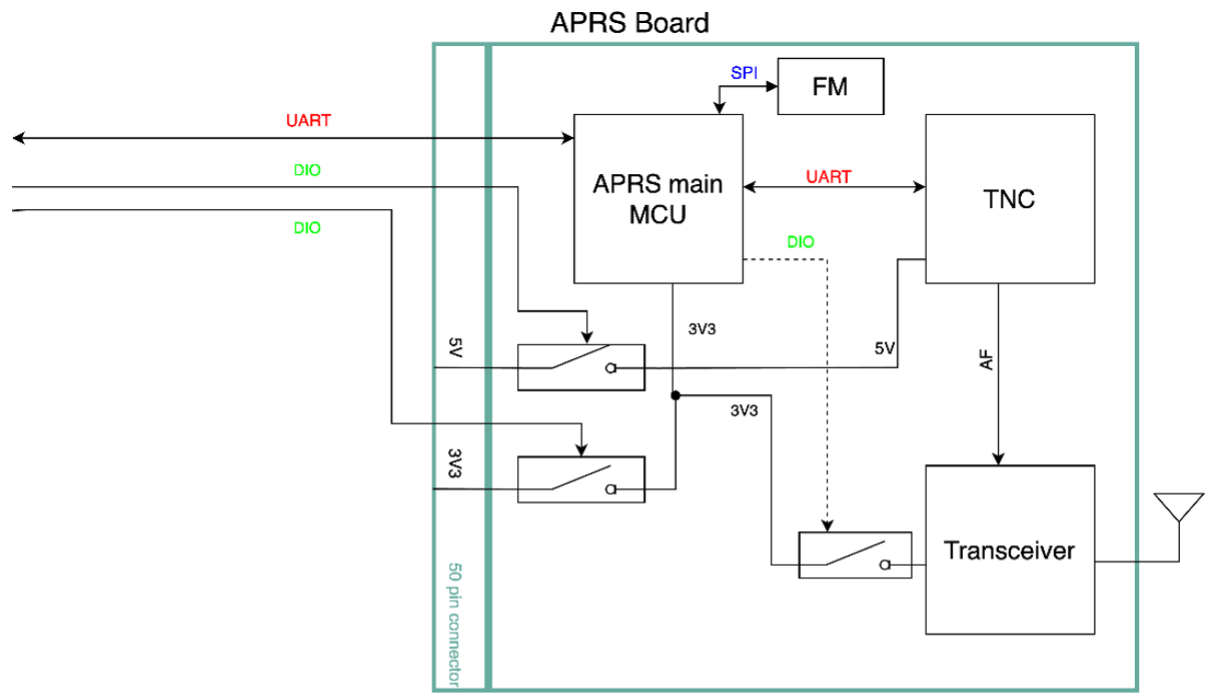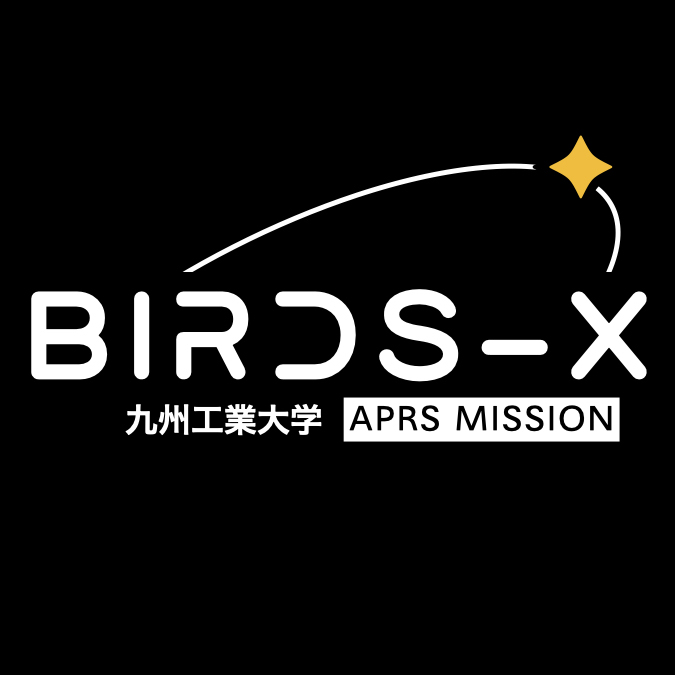General FAQ
1. Who can apply?
The BIRDS-X APRS payload competition is open to everyone. There are no restrictions on the qualifications of the participants, anyone can apply for it.
2. What benefit will the team get from participating in the competition?
The most significant benefit of the BIRDS-X APRS competition is that Kyutech will fly the winning APRS board designs onboard the BIRDS-X satellite, free of charge. You will also get a chance to get involved with the team members who will develop the satellite. The selection of the payloads are made towards the end of satellite development to keep the competitors involved in the development process and learn together with the BIRDS-X team.
3.What kind of support will Kyutech provide?
The BIRDS-X team will support participants in the APRS competition through webinars given throughout the duration of the competition. Technical questions regarding the mission requirements will be answered. Technical documents, such as the ICD (Interface Control Document) and Competition Handbook, will be provided so that teams can complete their APRS boards that comply with the mission requirements. Competitors may request assistance from Kyutech regarding their design.
4. Will Kyutech support the teams financially?
There is no planned financial support from Kyutech. Each team needs to find the required funding on its own.
5. What are the evaluation criteria for the budget plan?
The evaluation criteria for the budget plan will be conducted according to its feasibility. The budget plan is asked to know if the team understands the costs incurred during the development of the payload. If the plan meets the objective of the mission and if the funding availability fits the scheduled plan of the mission, then full points shall be awarded.
6. What is the necessary budget for developing the payload?
The necessary budget depends on the design objective, the component specifications, the selected supplier, as well as the cost of the extra equipment that may be required.
7. What factors should be considered for the budget estimation?
Participants need to consider the cost to design their boards, the cost of the breadboard design, the cost to develop an Engineering Model (EM) and a Flight Model (FM), and the delivery fees to ship the models to Kyutech.
8. Will the participants need to pay a registration fee?
There is no registration fee for participating in the APRS competition.
9. Is there a template for the application?
Yes, there is a template for the application form of phase 1. It is already available on our website. Please refer to this link: Application Form – BIRDS-X SATELLITE PROJECT (birds-project.com).
10. What is the meaning of “Quality of application” in Phase 1?
The quality of the application means the clarity, grammar, and organization of the application that will be submitted.
11. Can a team be comprised of members from different countries, cities, or institutions?
Yes, a team can be comprised of members from different countries, cities, or even institutions. There are no limitations on the team composition.
12. What is the maximum number of participants allowed in one team?
There is no limitation on the number of people composing one team, but we expect the team to be large enough to achieve all the objectives of the competition as well as for the competition’s outreach plan.
13. How many points of contact should there be for a team?
The BIRDS-X team asks for only one point of contact that will remain in the team throughout the competition phases. We will contact each team through the provided point of contact.
14. Will the technical documents of the competition change?
Yes, technical documents will evolve over time. It is important to keep in mind that the satellite project will advance parallel to the development of the payloads. That’s why we will keep updating all the technical documents. All changes will be announced through the website and social media of the BIRDS-X satellite.
15. When will the Engineering Model (EM) be required?
The Engineering Model (EM) must be delivered by September 2023 but more detailed schedule will be provided as you advance into the competition phases.
16. When will the Flight Model (FM) be required?
The Flight Model (FM) must be delivered at the end of December 2023.
Technical FAQ
1. What are the missions of the BIRDS-X satellite?
The BIRDS-X satellite missions seek to achieve the goals associated with APRS communication by fostering outreach for the radio amateur community and developing the APRS technology in space to improve its accessibility. There are four missions for the BIRDS-X satellite, the APRS-payload competition, the Ground Terminal (GT) competition, a student mission, and a demonstration of a new low-cost Ultra High Frequency (UHF) transceiver.
2. How many payload boards will be launched on BIRDS-X?
There are seven APRS payloads that will be launched. Two of them will be developed by the BIRDS- X team. The other five payloads will be designed and built by the five winning teams of the APRS competitions.
3. Why is an amateur radio license required for the APRS payload competition?
Communications authorities regulate Radio Frequency (RF) signal transmissions in all countries (e.g., Frequency Modulation (FM) and Amplitude Modulation (AM) broadcasters, Television (TV) stations, cell phone operators, etc.). Amateur radio communications are not exempt from such regulations. During the development of your payload in your country, you must test your payload transmission functionality. While performing such transmissions, it is mandatory to send a call sign identifying you as an amateur radio operator; that is why amateur radio licenses are required. It is well known that unlicensed transmissions, except in very few cases, are prohibited by law in any country.
4. How to get a personal call sign?
Each country has its own communications regulations, and amateur radio communications are no exception. Some countries require both theoretical and practical exams, while others require only theoretical exams to obtain an amateur radio license. Once you pass the exam process, you will get your call sign to operate on the amateur radio bands. Joining amateur radio associations can be helpful during this process, as they can provide all the support and materials needed to obtain the license.
5. How is the call sign for the payload assigned?
We are currently carrying out frequency coordination with International Amateur Radio Union (IARU) and Japanese radio communication regulatory body. The call signs will be sought from Japan, and we expect to receive it in the last phase. The payload should be designed in a way that the call sign of the payload can be changed using a command.
6. Are there any guidelines about the payload interface with the satellite?
The APRS payload must be designed as shown in the figure below. It shows the APRS payload connection with the satellite. The Interface Control Document (ICD) will introduce more details about the configuration, data, and mechanical interfaces.

7. According to the APRS Payload diagram, there is a TNC (Terminal Node Controller), is it possible to use a software or hardware based TNC?
The APRS payload diagram is for reference purposes only. Your team is free to choose how the TNC implementation will be done. This implementation can be hardware or software based, as long as the design fits the allocated power, mass, and volume budgets of the satellite presented on the ICD.
8. Are there specific suggestions for components/ microcontrollers that can be used? Like, STM, Teensy, or others?
There are no specific component suggestions. The participants may use any commercial components (COTS). Keep in mind that the selected components for the payload board must be able to operate within the temperature range of -15°C to +55°C. The participants must understand that the communication protocol between the Mission Boss and the MCU will be through UART, and the participant must select the components accordingly. For more details, please refer to the ICD of the competition located on the website of the BIRDS-X satellite (https://birds-x.birds-project.com/).
9. Will there be some form of RF shielding for each of the payloads?
Yes, since all payloads will be close to each other, to avoid communication failures due to Electromagnetic interference (EMI) generated from your payload, as well as other payloads, from any RF sources, we require each board to have RF shielding. The shielding must be provided within the indicated dimensions in the ICD.
10. Is it possible for the participants to add sensors for the APRS Payload and receive specific data according to their needs?
If it complies with the power, mass, volume, and data budgets, along with the safety requirements, the teams can add sensors according to their own mission objectives. But in that case, the team also needs to contact the BIRDS-X team to explain your unique mission and to arrange the time to use it. During the competition period, we will use the same control data for each team in order to evaluate the results of communication. After the competition finishes, the teams can get a dedicated window of time to use their boards for receiving their own generated data.
11. Which power lines will be used for the APRS payload?
We will provide the boards with two power lines 3.3 V and 5V. Depending on your payload design, you could use any of them. The team must implement two switches for the two power lines, as shown on the APRS payload diagram. Only one switch needs to be implemented if the team selects to use either 3.3V or 5V.Please refer to the ICD of the competition located on the website of the BIRDS-X satellite.

12. Is it possible to add a small coin battery on the APRS board?
Due to the safety concerns of the satellite and other satellite boards, we will not permit the APRS Payloads to add any kind of power sources, not even coin batteries.
13. Do the teams have to test their payload before sending it to Japan?
Yes, the teams will have test their payloads for sensitivity and other functionalities before sending the boards to Kyutech. Kyutech will conduct the tests for the integrated spacecraft, which will include your payload. Environmental tests such as vibration, and thermal vacuum tests will be done on your payload in Kyutech, but other communication tests (functional tests) shall be performed before sending the boards to Kyutech.
14. What communications/ functional tests should be performed on the payload board before delivery to Kyutech?
We would like each team to perform tests such as power consumption tests, sensitivity tests of the receiver, and tests on the ability to communicate with the Mission Boss through UART and execute commands. Receiver sensitivity and RF power output tests will be required. If more tests are required, teams will be notified in advance as they progress to the next competition phases. Also, software API will be shared for the communication test of your MCU with the Mission Boss.
15. Do the candidates for the APRS Payload competition need to have their own GT in their countries to communicate with their payload? Or is it done through a GT in Japan?
A GT is only necessary if you want to transmit or receive your APRS packets in your country when your payload is activated. Payload activation for the competition will be performed from Japan using the Kyutech ground station. After the payload competition is completed, each payload will be activated after coordination with the BIRDS-X team in advance.
16. What is the meaning of the handheld radio?
A handheld radio, also known as a walkie-talkie, is a transceiver (transmitter/receiver) device that performs two-way communications via radio waves. Some handheld radios have fixed antennas, and some have detachable antennas. If you want to improve your communication capabilities, especially when working with amateur radio satellites, it is sometimes a good idea to replace the standard antenna with one that has better qualities for satellite communications on amateur radio bands. This way a handheld radio can function as a ground terminal.
